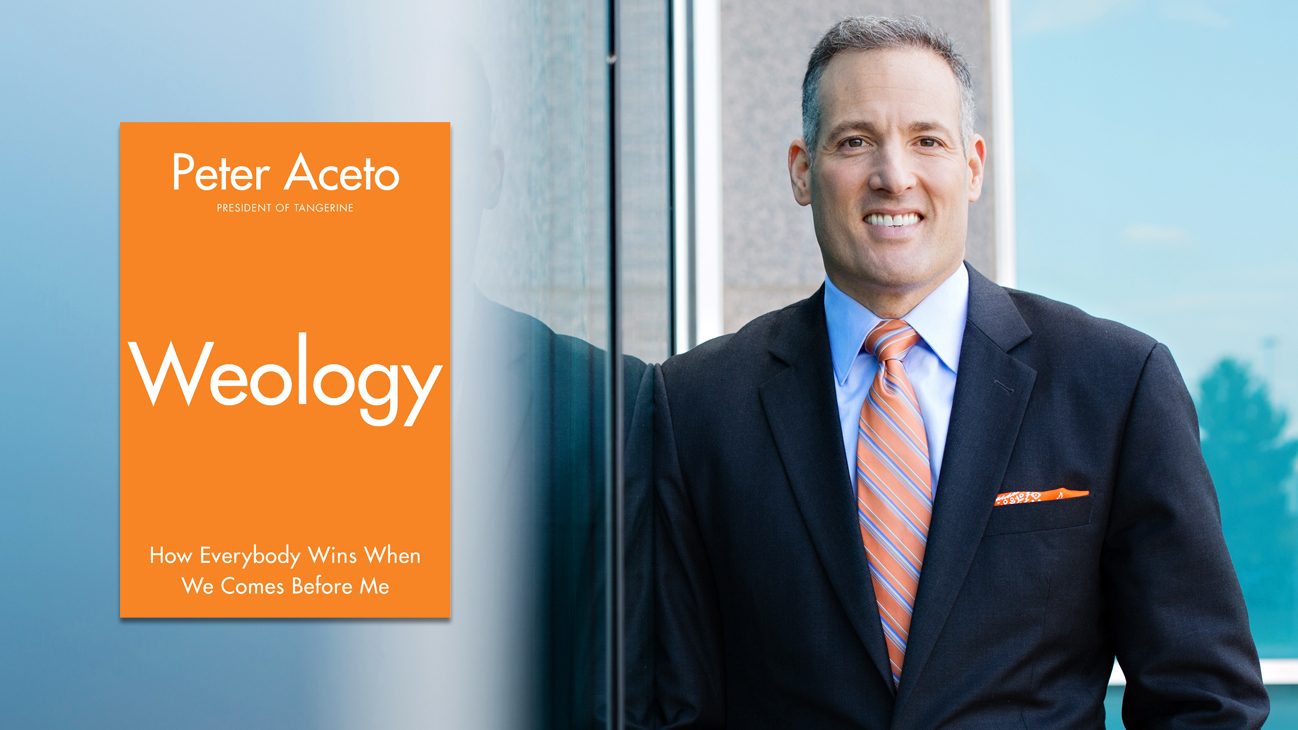Peter Aceto is a passionate leader. As the President and CEO of Tangerine, he stands for more than a leader of a bank: his goal is to change the conversation about leadership, and to inspire unconventional thinking and transparency that delivers unparalleled results for business and consumers. Peter’s new book, Weology: How Everybody Wins When We Comes Before Me, is a Globe and Mail bestseller, and The Huffington Post recently shared this excerpt on setting your staff up for success:
As I write these lines, I can count almost 1,000 employees in my care. I have a tremendous amount of influence over whether they’re happy or unhappy. If they’re not happy, I guarantee that by extension their families aren’t happy. If they had a bad day or they’re worried about their jobs, if someone treated them like a bag of crap, if they are uncertain about their future, they’re going to go home unhappy. Their misery will ruin more than their weekends, it’ll eventually get to everyone around them. And how productive can they be? How much can people contribute if they are living constantly with fear and stress?
It’s my job to set people up for success. People, by nature, are good and want to contribute to something worthwhile. Leaders have to put their people in situations that will enable them to do that. There’s more to it, though. To start, people need to know what’s expected of them, how they’re doing, and to get coaching to help them do better. I want Tangerine’s employees to be clear about what the organization wants to achieve, what they are expected to contribute to that, and how they’re doing relative to those goals and expectations.
The most I could ever ask for, growing up in business, was knowing what was expected of me, and how I was doing related to that. That’s it. Sounds simple, but this is more difficult than it seems. Executing on those expectations is often challenging. People have different capacities and ambitions. Some of my bosses would say to me, “Here’s a job description: just do exactly what it says and we’re good.” They wouldn’t encourage me to do more. You might think that would be a good thing, getting very specific instructions and not having to think outside the box, but I knew I could do more, that I could contribute in a broader way.
Many employees feel this way, with their potential begging to be recognized, cultivated and unleashed. Some are content to just do their job description, and that’s fine. But some, if they have the capacity and desire, can do more and want to do more — even if they don’t know it yet. I worked for a guy who had me pegged as CEO material, but if Arkadi Kuhlmann had told me that early on, I would have laughed.
You have to have your people in for both the job at hand and going beyond it. You have to give them the chance if they show the desire, to move around the company in different capacities. When they have it in them and don’t know it, they will respond to a challenge. Such coaching takes some time, some patience, but it pays off in the long run.
If we don’t set up our employees to succeed and give them a vision of something beyond the immediate task at hand, they worry. They micromanage, they obsess over pointless details, they become perfectionists. If we don’t do right by them, they feel trapped. We have to tell them how they’re doing it. Without that big picture, we cause worry. When the big picture is in sight, people will understand that by working through the tasks at hand, they are being set up for success while gathering experiences.
No one works the same job for 25 years anymore and then retires. Most of today’s employees don’t want that. They want to learn, but they want to diversify, to be challenged, to use current skills and learn others. Giving people a shot at more responsibility or different tasks is a great way to set people (and a company) up for success.
But understanding what success looks like and how to get there? That starts with a two-way conversation.
It’s crucial to remember that businesses are run by people — people with dreams, aspirations, ideas and expectations.

